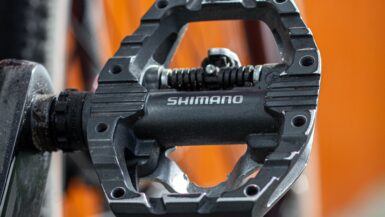Whether you are moving your equipment across town or the world, it’s essential to consider and plan for their safe transportation. From ensuring your freight is adequately packaged and protected to tracking it through all its points of transport, there are many considerations and steps to take before, during, and after transit. This article will look at some essential tips to help ensure the safe transportation of your equipment.
The Transportation Process
Before beginning the transportation process, properly preparing the equipment for transport is essential. Turn off and disconnect all power cords and cables from the equipment. If possible, securing any loose components or accessories that could be damaged during transit is also a good idea. Additionally, use appropriate padding and wrapping materials to protect the equipment from potential impacts during transit.
Choosing a Suitable Method of Transportation
The method of transportation chosen will depend on the kind of equipment and size. You may be able to transport small equipment in a personal vehicle; however, hiring a professional transport company may be necessary for more oversized items. Research the different transport companies and their services before deciding on the best transportation option.
Securing the Equipment During Transit
Once the equipment has been safely loaded into the chosen means of transportation, it is vital to secure it for the duration of the journey. If the equipment is being transported in a truck, it is crucial to strap it down with ratchet tie-downs and block it off from other items to prevent any shifting during transit. If the equipment is being transported in a van or bus, it is important to place it in an area that is well-secured and away from any potential outside threats or hazards.
Monitoring the Transportation Process
Once the equipment has been loaded and secured, it is important to monitor the transportation process. If possible, obtaining a tracking number or tracking device to keep an eye on the transport vehicle is highly recommended. Monitor the transport vehicle’s progress along its route and take action as soon as possible if any delays or issues arise.
Unloading the Equipment Safely
Once the equipment has reached its destination, it is essential to unload it safely. Ensure the equipment is unloaded in the same condition it was loaded and that all padding, wrapping, and packaging materials are removed correctly. If any damage has occurred during transit, document it and report it to the transport company for further investigation.
Preparing Your Equipment for Transport
When preparing your equipment for transportation, it’s crucial to ensure it is securely packed and ready for the journey. Ensure all cables and other loose parts are properly secured, so they don’t move around and become damaged during transport. Additionally, if you are transporting your equipment in the back of a truck or van, use tie-downs, straps, or ropes to ensure the equipment is securely fastened.
Protect Your Equipment from the Elements
When transporting equipment, it is important to protect it from the elements using covers and tarps. This will help protect your equipment from the sun, rain, snow, and wind that can damage your equipment during transportation. Also, use waterproof covers if you transport any fragile or sensitive equipment.
Choose the Right Mode of Transportation
When transporting equipment, choosing the correct mode of transportation depends on the equipment you are moving. For example, you may need a truck or van to move heavy or oversized equipment. If you carry more minor, delicate equipment, consider using a smaller vehicle or packing your gear in a more secure box or case.
Check Regulations & Restrictions
Before you begin transporting your equipment, you must check local, state, and federal regulations and restrictions that may apply to your journey. This is especially important if you plan to cross any state or country’s borders. Check the size and weight limits and any other rules and regulations that may apply to your journey.
Prepare for Any Emergencies
When transporting your equipment, it is crucial to be prepared for emergencies. Make sure to carry emergency supplies, such as a first aid kit and a spare tire. Additionally, inform your family and friends of your whereabouts during the journey in case of an emergency.
Appropriate Tools for Securing Your Equipment
When transporting your equipment, investing in professional transport equipment is essential. This includes things like specialized cases, straps, and padding. Professional transport equipment ensures that your equipment is adequately secured and protects it from impact and other external elements. It is also essential to check your equipment for any potential damage before and after transportation.
Utilize Security Devices for Maximum Protection
In addition to professional transport equipment, you should also consider investing in security devices for your equipment. This includes things like locks, alarms, and CCTV cameras. Security devices can help deter theft and provide peace of mind when transporting your gear. Any security devices you choose must be designed to be easy to use and tamper-proof.
Choose Appropriate Insurance Policies
When transporting your equipment, choosing the right insurance policy is vital. Make sure that your policy covers any damages or losses that may occur during the transportation process. Also, read the policy carefully to understand what is and isn’t covered.
Employ a Trusted Courier Service
If you are transporting your equipment over a long distance, employing a trusted courier service is crucial. A reputable courier service will ensure that your equipment is safely and securely transported from point A to point B. They will also have experience properly securing your kit to ensure it arrives in perfect condition.
Use GPS Tracking Technology
GPS tracking technology is another excellent tool for securing your equipment during transportation. This technology will provide you with real-time updates on the location of your equipment. This can help speed up the transportation process and provide you with more peace of mind regarding the safety of your equipment.
Stay Vigilant During Transport
Finally, it is vital to stay vigilant during transport. This means that you need to be aware of any potential threats and take steps to ensure the safety of your equipment. For example, always ensure that your equipment is secured correctly and that any security devices are activated and functioning properly.
Considerations for Delicate Equipment
When transporting your equipment, it is essential to take extra care with delicate items. Prioritize these items when packing and transport them carefully in well-padded boxes or cases. Additional cushioning material may be necessary to protect fragile items, such as glass displays.
Account for Changes in Weather Conditions
When transporting equipment, it is vital to consider potential weather changes. Changes in temperature and pressure can severely impact the performance and safety of delicate equipment. Consider using climate-controlled vehicles or temperature-controlled packaging to protect delicate equipment from extreme temperatures and humidity levels.
Consider Logistical Factors
When transporting delicate equipment, it is important to consider logistical factors such as loading and unloading. Make sure to use specialized equipment such as ramps, pallet jacks, and cranes when loading and unloading to avoid physical damage. Additionally, secure delicate equipment with straps and padding to prevent items from moving during transit.
Take into Account Transportation Hazards
From bumps and vibrations during transit to potential spills and shocks, it is essential to consider potential transportation hazards when transporting delicate equipment. Protective packaging materials, such as shock-absorbing foam, protect delicate equipment from any potential bumps or drops. Additionally, ensure equipment is properly secured in the vehicle to avoid spills and surprises.
Think About Additional Safety Measures
Finally, consider investing in additional safety measures to protect delicate equipment during transit. Consider using a GPS tracking system to monitor the location of sensitive equipment and extra protective packagings, such as waterproof cases or antistatic bags, to prevent potential damage during transit.
Appropriate Vehicle for Transporting Equipment
The type of vehicle you choose is a critical factor when transporting your equipment. You should select one that is appropriate for the size and weight of your gear. Depending on the type of equipment you are transporting, a truck, SUV, car, or van may be a suitable option. A trailer may be the ideal choice if the load is huge.
When selecting a vehicle, consider its carrying capacity and the distance you need to transport your equipment. If you are transporting heavy tools, you should consider a powerful engine and robust suspension for extra support. If the size of your gear is too big for the interior of the vehicle, then you should choose one with an open trailer or secure trailer hitch to secure it safely.
Evaluating Safety of the Vehicle
Inspecting the vehicle for loose parts, missing components, and any damage that could compromise its safety is essential. Before transporting your equipment, you should also check the brakes, tires, lights, and other vital components. Additionally, ensure that the vehicle offers enough space and security to protect your equipment during the journey.
Ensuring Maximum Protection
Once you have selected an appropriate vehicle and ensured its safety, you should ensure that your equipment is properly loaded and secured. It is crucial to secure the equipment with straps and rope to prevent it from shifting while in transit. Additionally, you should avoid overloading the vehicle, as this can lower its performance, increase fuel consumption, and increase the risk of an accident.
Staying Aware of Your Surroundings
Finally, make sure that you are aware of your surroundings at all times during the journey. Long-distance trips can be tiring, so it is vital to stay alert. Pay attention to the road conditions and traffic signals, and use the correct lane to safely transport your equipment across your destination.
Unloading Equipment Properly
When unloading your equipment, it is important to adhere to the procedures outlined in the operation manual and to use the proper equipment and tools. All personnel involved in the unloading process must wear the appropriate safety gear, including protective eyewear, safety boots, and hard hats. Ensure the equipment is unloaded using the proper lifting and carrying methods to prevent potential injuries or damage.
Secure All Loose Items
Before you begin unloading the equipment, it is essential to ensure that all loose items, such as wires and cables, are properly secured. This will help ensure they don’t become snagged on other equipment or cause a hazard during the unloading process.
Check the Siting Area First
To ensure the safety of your equipment, it is essential to check the seating area before you unload the equipment. Make sure that the site is free from obstacles and is correctly leveled. You should use the appropriate equipment to balance the area and remove the barriers if there are any obstacles or uneven surfaces.
Follow all Safety Regulations
When unloading your equipment, always follow the safety regulations outlined in the manual and use the right tools and equipment. All personnel involved in the process should be familiar with the safety regulations and always wear the proper safety gear while unloading the equipment.
Pay Attention to Clearance and Space Needs
When unloading the equipment, make sure that there is enough space and sufficient clearance around the equipment. This ensures that all personnel involved in the unloading process have enough space to move around safely without running the risk of tripping or getting injured.
Proper Handling and Transportation of Equipment
When handling and transporting your equipment, it is essential to use the appropriate equipment and tools. Ensure the equipment is securely and properly fastened when transporting it to prevent any potential injuries. When unloading the equipment, it is also essential to check that all lifting and carrying methods are carried out correctly and safely.
Following Guidelines for Transporting Your Equipment
Transporting equipment is no easy task, as transporting your items safely can prevent them from being damaged or lost. To transport your gear safely, there are a few essential tips to keep in mind. The first and most important tip is to package your equipment correctly. Securely packing any items will ensure they are well protected during transport. Additionally, if you are transporting multiple pieces of equipment, label each with its unique identifier. This will make it easy to distinguish between each piece of equipment. Finally, research the transportation company you are using, as this will give you an idea of what type of service they provide and whether they will meet your needs. Following these essential tips will help ensure that your equipment is correctly transported without any damage.






Leave a reply